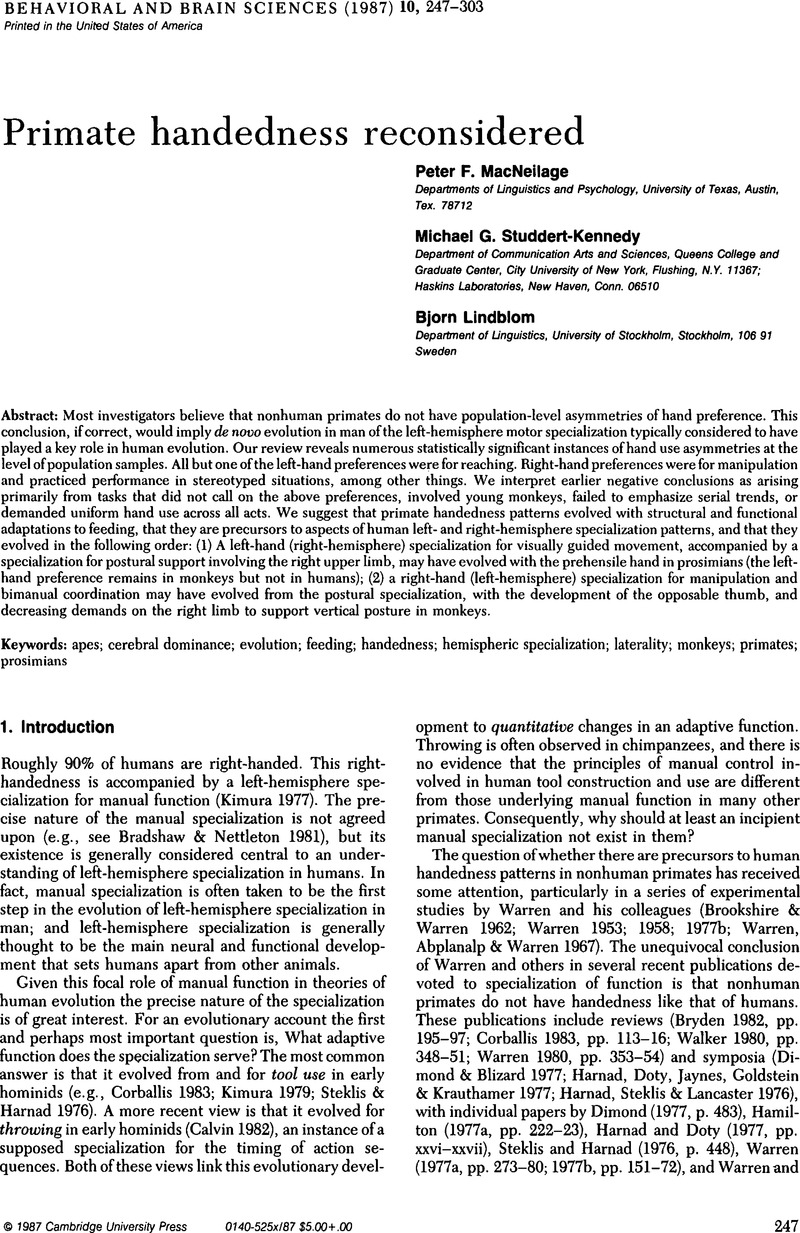Crossref Citations
This article has been cited by the following publications. This list is generated based on data provided by Crossref.
Bradshaw, John L.
1988.
The evolution of human lateral asymmetries: new evidence and second thoughts.
Journal of Human Evolution,
Vol. 17,
Issue. 6,
p.
615.



